- Boat
- Articles
- About
- Tehani-li Logs
- 2004
- Uligan Maldives
- Man, Oh Man, Oman
- Eritrea: The Nicest Place You’ve Never Heard Of
- Cruising Notes: Oman to Eritrea – From Pirates to Cappucinos
- Old Testament Sudan
- Egypt: Legend, Myth and Reality
- Thoughts on Cruising the Red Sea
- Greece: Civilization Again
- Montenegro
- Malta
- Sardinia, Italy
- Barcelona, Spain
- 2003
- 2002
- 2001
- 2004
- Contact
Two Weeks in Barkley Sound
Last summer we had the keys to the kingdom and wisely spent our time exploring Alaska by sail. This summer we nurtured the somewhat lesser ambitions of enjoying the Canadian Haida Gwaii Archipelago (Queen Charlottes) but fate suddenly intervened with its customary rude slap to the face: I was unable to get the time off work. It is situations like this when one finds gainful employment an intrusion.
Work, that four-letter word
I had bought and read every book written on the history (some) and sailing (not much) of Haida Gwaii. Instead of two months free as previously planned we managed to eke out just two weeks away aboard. This necessitated a drastic cut to our plans and we decided to head for Barkley Sound on the wild west coast of Vancouver Island.
I had heard of Barkley Sound from other sailors who waxed poetically about its beauty and the “stunning” Effingham Anchorage was a recommendation that never failed to fall from the lips of admirers who had been – and plenty who had not. Right, off we go.
An elaborate scam
English trader Captain Charles Barkley was one of the first Europeans to visit the area in his ship Imperial Eagle. He brought along his 17-year old bride, the English rose Frances, who was definitely the first European woman to visit Vancouver Island and perhaps the Pacific Northwest. Their first trading voyage to the area was part of an elaborate scam. An ex-East India Company sailor, Barkley invested £3,000 in the 400-ton ship Loundon (around $350,000 in today’s money, a tidy sum). Along with several other passive investors in 1786 he had her re-fitted and falsely registered as Imperial Eagle with an Austrian flag – all to avoid having to pay for an expensive trading license from his venerable employer who had exclusive rights to the area.
After a perilous journey across the Pacific, during which her husband fell ill and Frances was “subjected to the unprincipled intentions of the Chief Mate,” Captain Chuck and Frances arrived in Nootka Sound, on Vancouver Island’s west coast in June 1787. They spent a month at Nootka trading for sea otter pelts with the local indigenous people and sailed south exploring the west coast. Barkley named many landmarks which are still in use on charts today: Frances Island, Loudoun Channel, Cape Beale (after their purser who fell prey to Indian attack) and Imperial Eagle Channel are all found in the sound which, with an original flourish, he modestly named after himself.
“The otter is a source of pride and unquenched desire. It ends in ruin and perdition.” – Tsimshian song from the era
Their voyage south took six months and after touching at Neah Bay Imperial Eagle sailed with her valuable cargo of otter pelts to Canton (Guangzhou), China and sold the booty for a profit of £10,000 (about a million dollars today). This was a good beginning and Barkley had a 10-year contract – or so he thought. After picking up the typical cargo of Chinese goods, plastic flip-flops and cheap toys that break, Imperial Eagle made its way to Mauritius in the Indian Ocean where Barkley learned the East India Company had found him out and was none too happy. To firmly register their displeasure, the company took legal action whereupon Barkley was promptly deserted by his former backers. Imperial Eagle was confiscated and after a lengthy legal battle the Barkleys managed to settle for £5,000 for the loss of their investment and contract.
Captain Barkley and wife Frances made more trading voyages on other ships and she in her dotage wrote down some of her memoirs of those times in a diary which was unfortunately lost in a house fire 100 years ago on Vancouver Island. There is enough information out there, however, to piece together some of their interesting history, much of which can be found in the book, “The Remarkable World of Frances Barkley: 1769-1845”, by Beth Hill. In it we hear the voice of Frances herself and read her opinions (many of them cutting) of the wild places to which she and her husband sailed. Frances was by virtue of necessity a tough cookie and not easily impressed. If something wasn’t English then, basically, it wasn’t much.
We do learn at the end of one multi-year voyage her luckless husband sailed his trading vessel back to the UK and went ashore to see his family only to learn the very next day the crew had stolen the ship AND all the cargo! Captain Chuck had lost everything, again, and had to embark on another costly legal battle to chase down and reclaim what was his – years after the fact. There is some information on him to be found in Wikipedia which notes drily, “Little is known of his latter years. They were probably not prosperous.”
Feeling my prosperity threatened by an expensively recalcitrant watermaker, I had bitten the bullet and heaved it overboard. My wife (who is always right) had told me from the beginning to get rid of that noisy, expensive, frustrating piece of junk and start with a new unit. After two plus years of ignoring her sage advice I finally caved in and did just that. On this trip we were going to try it out for the first time.
What joy abounds aboard now! We actually have a watermaker – courtesy of CruiseROWater and five-thousand bucks – that produces 40 gallons an hour of crystal pure drinking water, sweeter than dew on the lily. I found if I ignored the cost per gulp I could really enjoy the taste and I drank so much of this wonderful water on board it even cut into my beer consumption thus racking up more savings!
June 9th, 0540. The sky is overcast and all is still. I write in the ship’s log in big letters: “Heading North to Canada.” Everyone is sleeping as I fire up the Yanmar 4JH3-HTE and motor out of Shilshole Marina. On autopilot we boom up Puget Sound at 7.5 knots as I stow the lines and fenders and get Asmara Sky ready for sea. She is happy to be on the move again, as am I.
By eight o’clock the crew is up and having its breakfast of hard tack and salt horse. We have an average crossing of the 28 mile wide Juan de Fuca Strait and tie up to the customs dock in Victoria, BC at 1500 hours. We had motorsailed the whole 65 miles and were looking forward to a quiet night tied to the dock in James Bay in front of the majestic Empress Hotel right downtown.
There is a new customs dock at Raymur Point, just before one enters Victoria’s inner harbor. It wasn’t there on our last trip back in January. Check-in to Canada, as per our usual experience, was easy with an affable Canuck official on the end of the telephone line at the dock:
“Mr. Hillen, do you have any alcohol on board?”
“Uh, I think about 4 small bottles of bad American beer.”
He repeats slowly while typing, “Four. Bottles. Of. Beer.” Is he really writing that down, I thought? (He was). I stifled any comments that would point out how ridiculous it was to take these things so seriously.
We like Victoria for all the reasons she is popular. One of my favorite stops there is Swan’s (Buckerfield’s Brewery) on Pandora Ave by the bridge, a ten-minute walk from the docks. There the thirsty sailor can buy large cold frosty bottles of Swan’s Oatmeal Stout, Swan’s Legacy Ale and Riley’s Scotch Ale, which at 8% alcohol, appeals to the Scots in every man allowing him the illusion of value while getting buzzed. Lugging these precious vessels back to the boat works up a thirst and, hey, now I have a solution for that.
The weather continued to be glorious so we spent the next day taking the girls to justifiably world-famous Butchart Gardens. Looking at the countless acres of lush, manicured flower gardens and lawns interspersed with ponds and graceful fountains it is hard to imagine the area used to be a limestone quarry and cement plant! The crew had a great time running around and playing chess on a giant board. It is always good practice to get the tars ashore and work off some steam.
Not having any transportation other than our mother ship and dinghy, we hopped on a tourist bus with all the other, mainly elderly tourists, for the half hour ride out to the gardens. Looking out the big windows we were entertained by the sonorous tones of the bus driver pointing out local sites and telling lame stories.
“Yessir, Pamela Anderson. You folks know Pamela Anderson? Well, she’s from the island. You didn’t know she’s Canadian? Well, she is. Most of her….”
June 11, 0500. We motored quietly out of still sleeping Victoria Harbour. The tide was with us as we raced through Race Rocks and hit 12.6 knots speed over the ground. Of course, you pay for that and the tide turned after lunch slowing our progress to a matronly 6 knots. We motored through patches of fog up until Sombrio Point and finally turned the corner at Cape Beale into fabled Barkley Sound. At 17:30 we entered the inlet that shelters Bamfield and dropped the hook in 31 feet off Burlo Island. Ninety miles had passed under our keel that day and all of it with your author at the helm. Yes, it was time for a Swan’s Oatmeal Stout!
We have a rule on board: no alcohol underway. No exceptions. It is pretty easy to enforce since the crew doesn’t drink and neither does the wife. However, after we tie up or drop the hook and all is secure aboard, I do not mind cracking open a bottle of beer or two. Hydration is important and terrible things happen to you when you are dehydrated.
Bamfield is “the end of the road” for those who hike Canada’s well-known West Coast Trail which begins at Port Renfrew and winds along the coast for 75 miles. While now the WCT is frequented by hikers, kayakers and other lovers of all things outdoors, it was originally built to help shipwrecked sailors find their way back to civilization and was formerly known as the “Lifesaving Trail.” The WCT is visible here and there from the water as it flows along beaches, rocks and the temperate rain forest for which Vancouver Island is known.
The All Red Line
The world’s first telegraph cable to circle the globe originally completed its loop in Bamfield in 1902. The tiny outpost of fishermen and First Nations people was linked by cable to Fanning Island 3,200 miles across the Pacific Ocean. Called the “All Red Line” since it only passed through the British Empire territories (normally shaded red on maps of that time), the cable took decades to complete and was enormously expensive. Yet, like the US and the first satellite network which produced GPS, this new tool gave Britain a technological advantage over everyone else. The island country even kept the cable intact and functioning during World War I when Germany had all of its communication to the world cut. The remaining buildings today of the cable terminus are visible as you enter the inlet and form a marine research center shared by several Canadian universities.
Bamfield is a small hamlet but it has an interesting wooden sidewalk along the west side of the inlet upon which it perches. We visited the small store to buy some mustard (something that was forgotten during provisioning) and the girls got to run along the boardwalk as it wound its merry way in front of houses on the waterfront. A short dinghy ride later we espied a bruin on Rance Island. “Bear!” I shouted as I killed the engine and the feisty crew looked on. He was ambling along the shoreline, as bears do, and was rather annoyed we had spotted him, melting away into the trees a few moments later.
What’s so effing great about Effingham Bay?
After our little adventure with the bear we returned to the boat, mustard in hand. I raised the dinghy on the davits, lifted the anchor and we motored out into the Sound looking forward to exploring the Broken Group of islands, part of the Pacific Rim National Park Reserve and to anchor in legendary Effingham Bay, of which we had heard so much.
Ninety minutes later after crossing Imperial Eagle Channel, we dropped the hook in 49 feet in E-Bay and looked around. Previously known as “Village Island,” Effingham is the only island in the Broken Group that has fresh water. There is a landlocked lake in SE portion of the island that reportedly can be reached by crawling on your belly along an old trail from the back of the anchorage. Two things to remember when anchoring: mangroves or fresh water mean one thing – mosquitoes. As the anchor chain raced out its locker and our 110 pound Spade anchor made fast friends with the muddy bottom I didn’t see any mangroves at 48 degrees north and I wasn’t thinking about that lake.
Later that night as we tried to sleep, five fat mozzies invaded our aft cabin and I remembered the lake. Wielding our battery-operated bug zapping wand like a light saber by 2 AM I had mercilessly hunted them all down. The next morning 5-year old Adriana and I took the dingy to shore in a vain attempt to stretch our legs and find that trail. It was high tide (12 foot tides are common in the region and one has to be always aware of tidal movements and depths when choosing an anchorage or bringing the dinghy ashore). Instead of a beach there was a shallow area covered with sharp-edged, toaster-sized rocks making a dinghy landing perilous. We managed to get ashore but without our usual grace and aplomb. I had hoped to follow the little stream entering the anchorage but it was completely choked with brush and fallen trees. We did see a sign warning us of wolves on the island. Pretty cool. But walking the trail without a machete and large chainsaw was out of the question. Back to the boat.
Asmara, my 8 year-old daughter is the fisherman in the family and we were here to take her fishing. I had even driven up to John’s Sporting Goods in Everett with her to get proper fishing gear. (John wasn’t there as he was “out fishin’ in Alaska.” Right. If I had a fishing store that’s probably what I would be doing as well). I had purchased the necessary Canadian fishing license for 100 bucks and with a shiny new rod for her we climbed into the dinghy with our tackle box plus camera, VHF radio, PLB (personal locator beacon) and cell phone. Surprisingly, we could get cell phone reception almost everywhere in Barkley Sound. (This fact alone will tell you and area is too civilized).
After an hour or so of jigging by the rocky islands behind Effingham Island we pulled up a few small rock fish and one nice ling cod. The ling cod might have been a greenling because it was rather pretty and lings are not. Dinner in hand the proud hunters motored back to the mother ship where Ariel had already started cooking our evening meal.
“What’s with this chicken?” I demanded.
“It’s for dinner,” she said simply.
“Hey, but you KNOW we went fishing AND we caught this nice ling cod. Ye of little faith.”
She was right to start on chicken as that was the ONLY fish big enough to eat we caught for the entire trip. There was lots of chicken on all those other nights…
Not overly keen to share my anchorage and blood of my family with more mosquitoes, we upped the anchor to head over to Turret Island. The chain came aboard slathered in slimy mud transformed into what looked like a cable thick enough to hold up a freeway overpass. Just under three miles away, Turret is a little more exposed to the fresh winds coming off the North Pacific and since it has no fresh water (or mangroves) we had a quiet bug-free night anchoring east of Nantes Island in 46 feet. The island had a more wild feeling to it with smaller twisted trees bent into interesting shapes from fighting against the constant wind reminding us adversity builds character, even in trees.
Sleeping with a 110 pound anchor at work means one sleeps well – every night. I strongly recommend an “oversize” anchor for any cruising boat and double oversize is even better. Your anchor isn’t big enough until people sauntering down the dock stop and laugh at it. Ours attracts its fair share of idle commentary.
The next day we motored nine miles across Loudon Channel to get to Ucluelet for provisioning. The village is pronounced “yoo-cloo-let,” and repeating this over and over again in my mind would be a definitive test for sobriety. The locals probably feel the same way and just call it “Ukee.” The town is much larger than Bamfield and is the provisioning center for Barkley Sound. Protected from the dangerous waters of the unforgiving North Pacific by the Ucluth Peninsula, Ucluelet means “people of the safe harbor” in the Nuu-chal-nulth language (another potential sobriety test) and boasts a bomb-proof anchorage. We anchored in 50 feet of thick mud above Lyche Island, just north of the inlet to the marina where there was room for probably one thousand other boats. Aside from a ketch from Alaska, we had the place to ourselves.
“Ukee” is a pleasant spot for a settlement, compact and walkable. Surprisingly we found several places selling fresh organic veggies and we loaded up. We also took the girls to the Ucluelet Aquarium which is found in a blue wave-shaped building right on the water. Although expensive ($42 for the four of us), the girls enjoyed all the touch tanks but living on a boat and doing plenty of tidepooling meant for them it was not overwhelming. After spending an hour there we managed to scoot them out the door past the fuzzy stuffed toys without having to buy any. Success.
We enjoyed a leisurely breakfast the next morning and motored out of “Ukee” at 0930. Our destination was the daringly named “Robber’s Passage,” 19 miles right across the sound and sandwiched in between Tzartus Island and Fleming Island. Port Alberni Yacht Club has a small but nice outstation on shore there with a dock to tie the dink to. There are also several large mooring balls that I saw fishing boats tie up to but as always, we anchored (24 feet). There are three things that fail to gain my trust: car salesmen, politicians and mooring balls.
We found some nice trails on Fleming Island right behind the YC which we took advantage of. The picture below is on the backside of Fleming Island where we had a picnic and watched a bald eagle do a fly by. After eating, Asmara and I also saw a snake slither under a log near us in the sand. A snake in BC and on the beach! There are no poisonous snakes on Vancouver Island but it was still a surprise.
We spent two nights at that peaceful anchorage and saw no robbers. The yacht club was not open yet which was curious to us since the season is so short and it was already mid-June. We found out that even though we thought the sailing season to be well advanced everywhere we went was pretty deserted, even Victoria Harbour.
Back across Barkley Sound we puttered 11 miles to anchor behind Clarke Island. This is one of the more outer islands in the Broken Group and had a wilder, slightly desolate feel to it. The beaches were gorgeous, the water clear and the tide pools extensive. I think this was our favorite anchorage of the trip. We dropped the hook in 18 feet of water (low tide) and it held firm right away. Another peaceful night was our reward.
The next day was spent happily exploring tide pools and a vast beach that appears on the back of Clarke Island at low tide. We found a stone fireplace and chimney, the only remains of an old homestead near the beach along with several nice places to pitch a tent. Indeed, the island was popular with kayakers and we noticed two different groups camping there that night.
After our second provisioning trip back to Ucluelet and another quiet night there, we wanted to head back across Barclay Sound in “a storm” to anchor in Joe’s Bay. A trough was moving through the area with wind from the SE at 15-20 knots bringing lots of light rain. Here was our early morning pre-departure conversation:
Ariel: “You want to leave today? Now?”
Me: “Yep.”
Ariel: “But nobody is going to be moving around in this weather.”
Me: “Yep.”
We wound our way 11 miles through the islands along Peacock Channel to drop the hook in 38 feet in Joe’s Bay, nestled between Dodd, Walsh and Turtle Island. With only two narrow and twisted entrances, Joe’s Bay, along with Ucluelet, is the most secure anchorage we saw in Barkley Sound. When we arrived, there were quite a few very curious hummingbirds which kept investigating us and flying around our cockpit despite the weather. One even flew down below into the salon and buzzed us as we were playing cards before zipping outside again to rejoin his hyperactive friends. (“I understand hummingbird stew is quite tasty but you need a lot of them,” I told the startled girls).
We much preferred Joe’s to Effingham Bay and when the wind built to 20+ knots that afternoon we felt nary a breeze, snug in our little hideaway. Indeed, a few days later back in Victoria we met an elderly singlehander who was blown out of Effingham that same afternoon and almost lost his boat. On the bright side, he did not suffer from mosquitoes.
The bad weather passed during the night and we took off for Victoria at 0515. I was worried about left over swell and slop and we had both for about six hours with a two-foot chop dancing across a 10-12 foot SW swell making both girls sick. But hey, they bounced right back and now they don’t remember anything! (A note to parents who are worried about taking children cruising: Seasickness is like pregnancy – or so I have observed since I have never been pregnant and don’t suffer from nausea at sea – once the experience is over and done with only the good memories remain).
After motorsailing 95 miles we entered Victoria Harbour at 1830 and tied up on D-dock on the Causeway right under the Empress Hotel. The weather was now stunning; the sun was shining, the people were smiling and the beer was cold. We tied up. We relaxed. It was hard to leave so we stayed two days.
Before our departure back to Seattle I had to see the Terry Fox Memorial at Mile Zero on the TransCanada, an easy hike from the harbor. Terry Fox is a hero of mine and all Canadians know him and his story. Diagnosed with bone cancer in 1977 at the age of 21, he had his right leg amputated and spent time in a cancer ward recovering. Greatly disturbed by the suffering of other cancer patients, particularly children, Terry wanted to do something to help in the fight against this terrible disease. He decided to raise money for cancer research by running across Canada – the second-largest country in the world – and on ONE leg. In 1980, after training for six months, with no fanfare and zero publicity, Terry began his Marathon of Hope at the far eastern end of the country in St. John’s, Newfoundland. Running the equivalent of almost a marathon every single day, Terry’s idea and determination began to attract national attention as he made his way across the country. After running 143 days and 3,339 miles and reaching Thunder Bay, Ontario the cancer had spread to his lungs and he had to stop. Terry Fox died nine months later.
A national hero, Terry has many parks, buildings and roads named after him (posthumously, unfortunately). The Terry Fox Run is an international event held once a year in over 60 countries around the world and is the world’s largest one-day fundraiser for cancer research. Over $600 mn has been raised in Terry’s name to date.
His problems made ours seem trivial – and they were. Keen to get back to Seattle in time to maintain the illusion of having a job, we left the next day and crossed the Juan de Fuca Strait without incident.

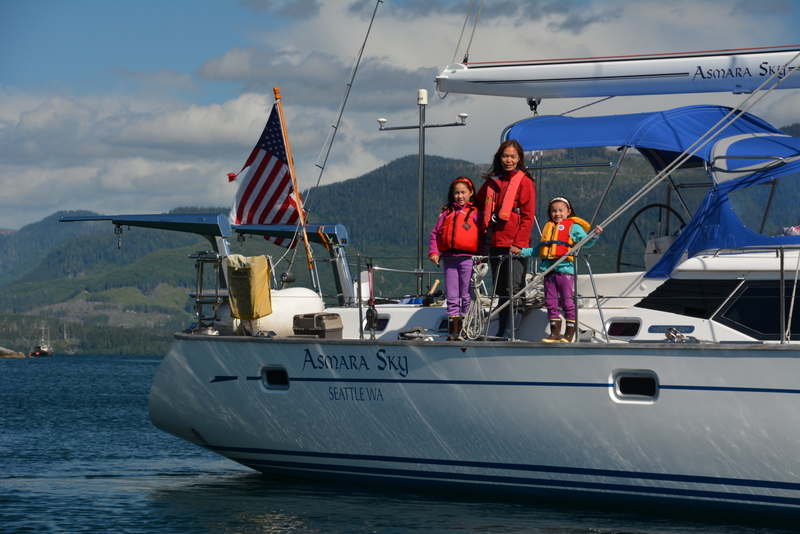
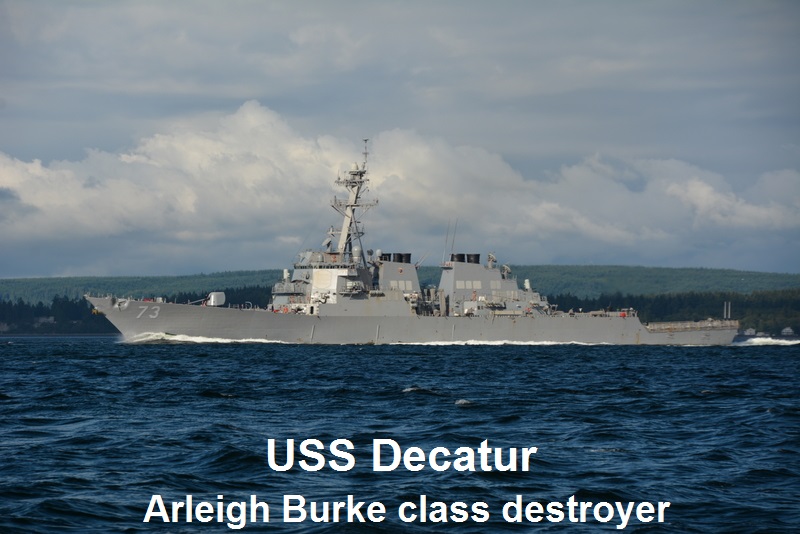
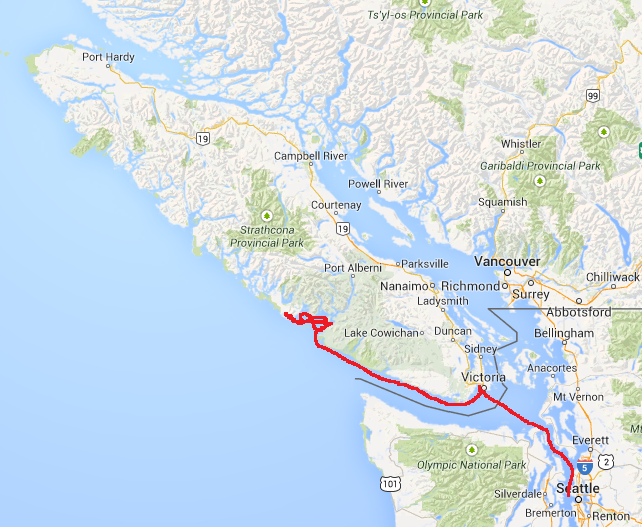
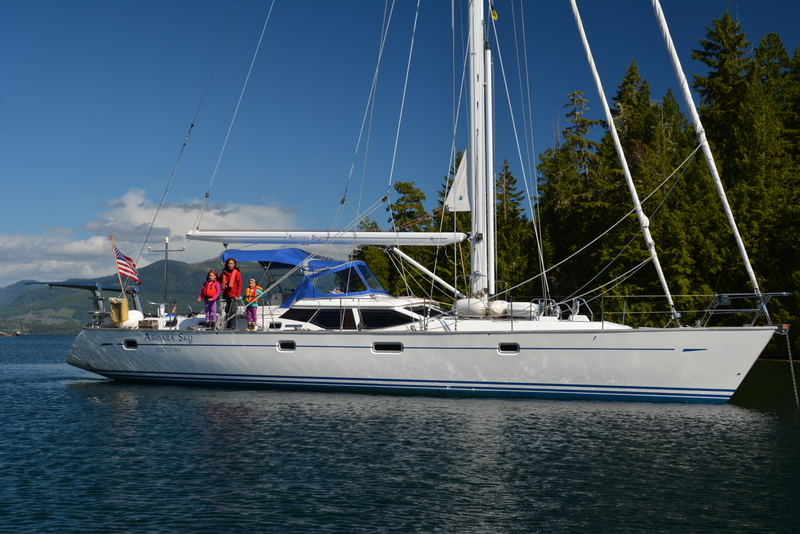
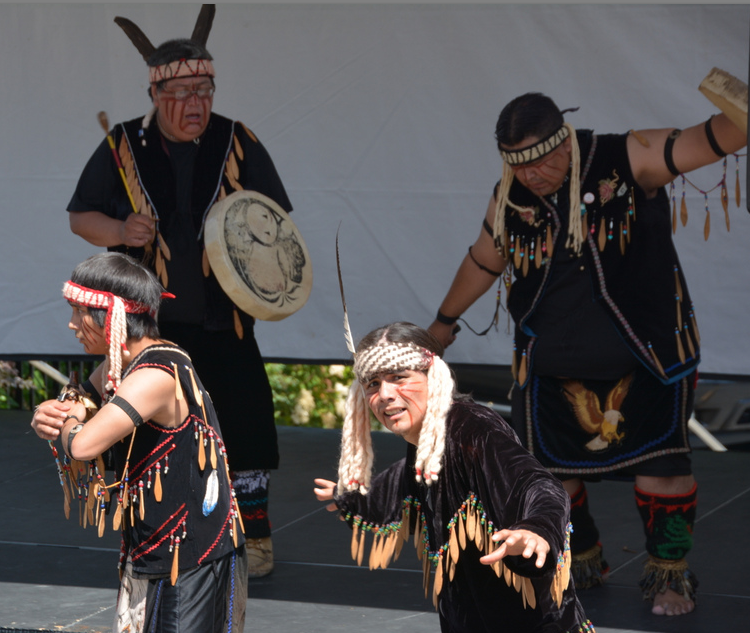

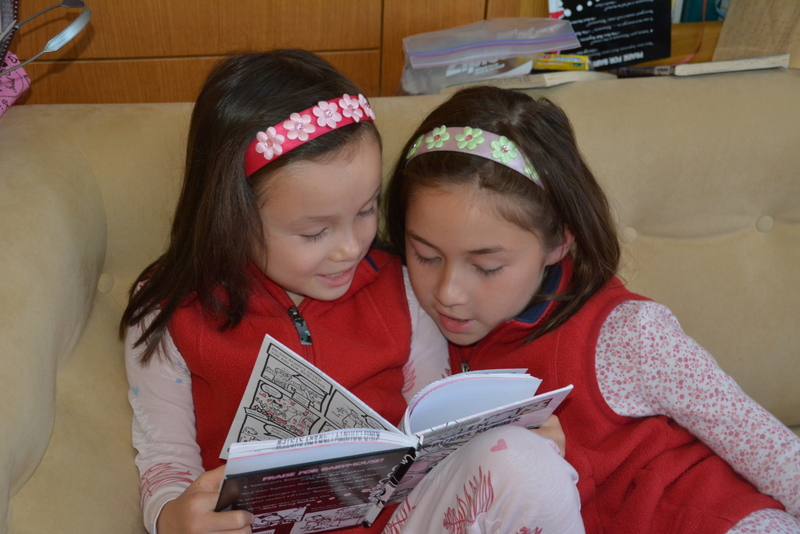
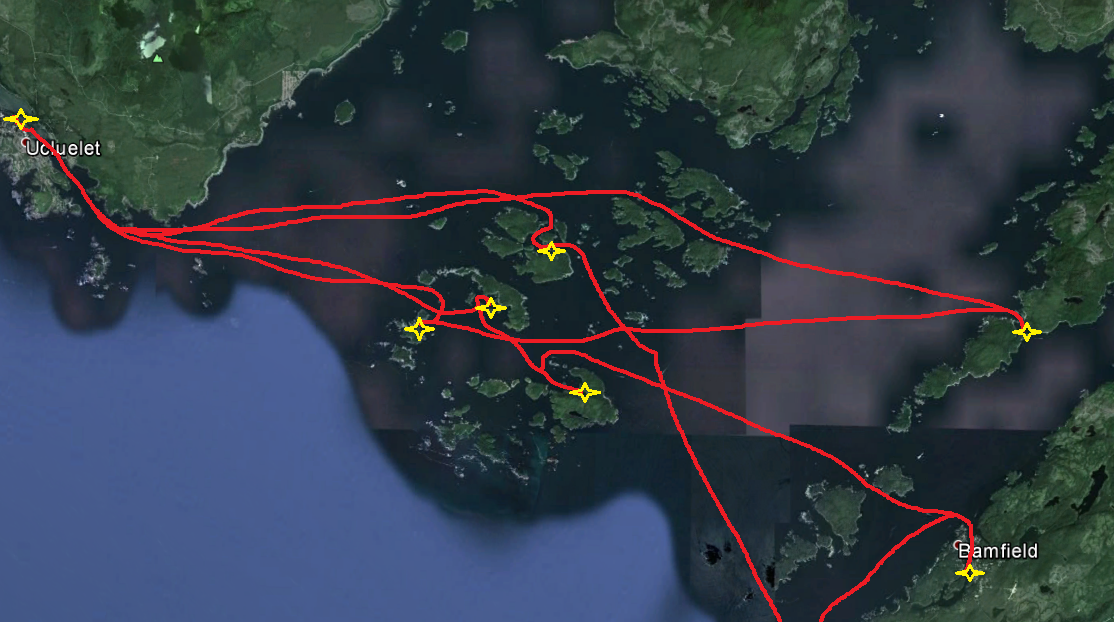
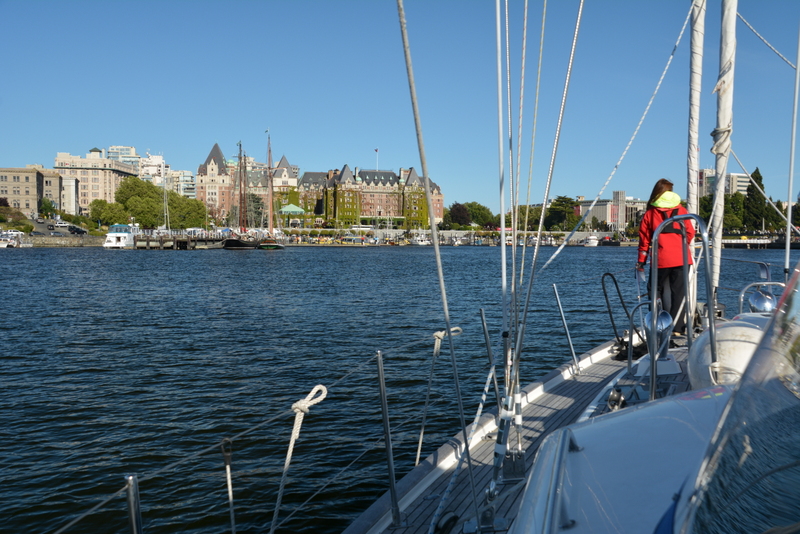
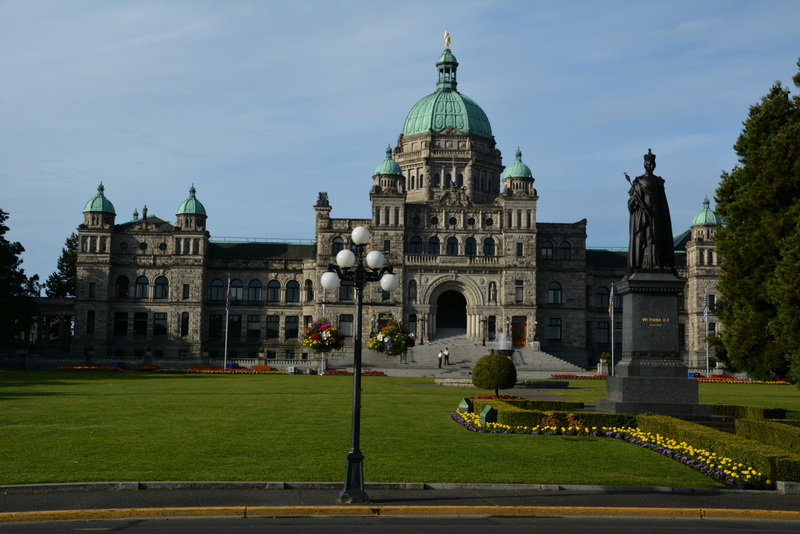
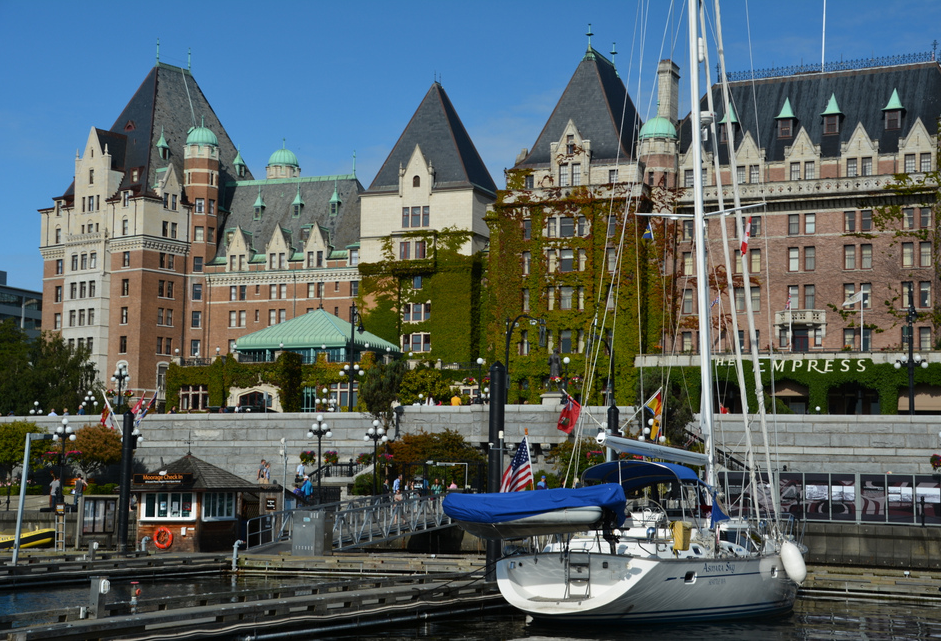

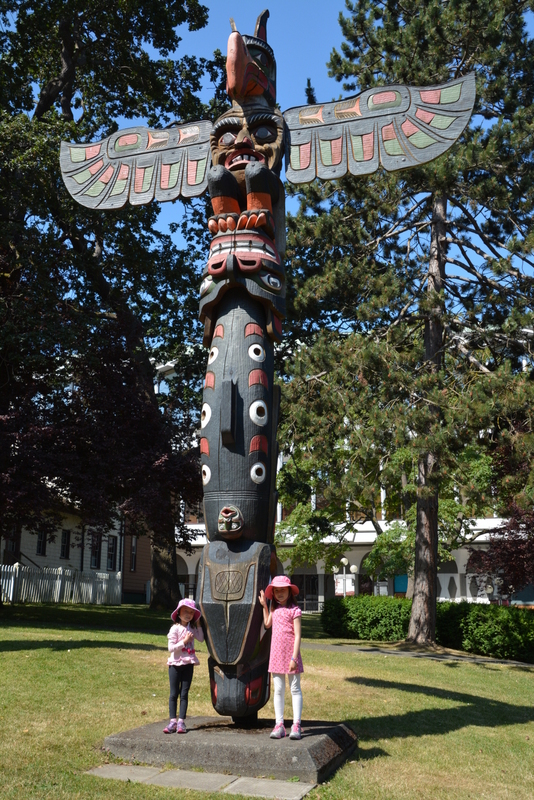
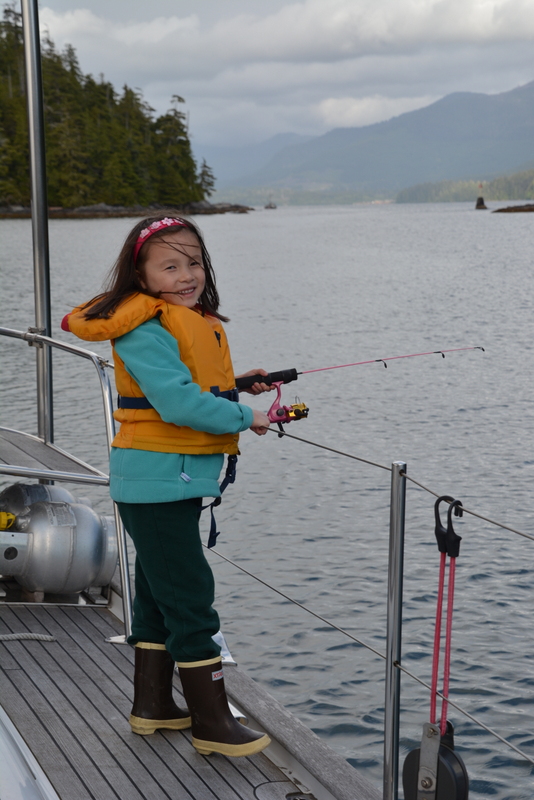
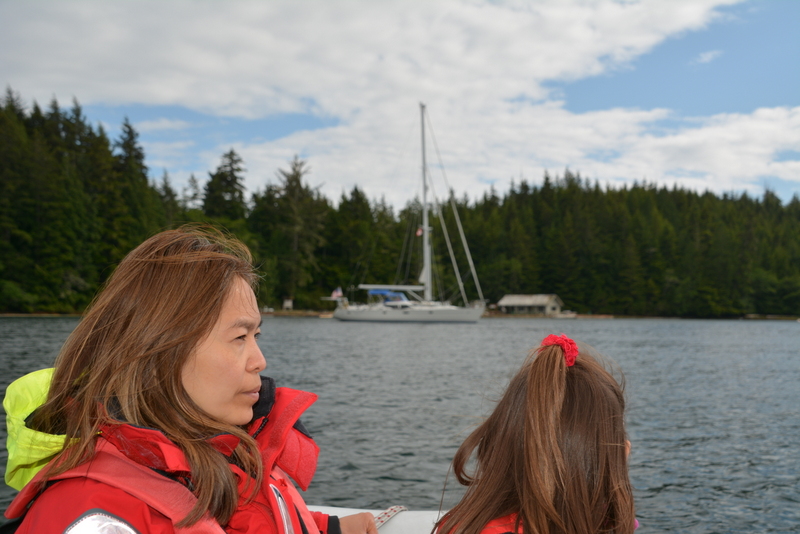
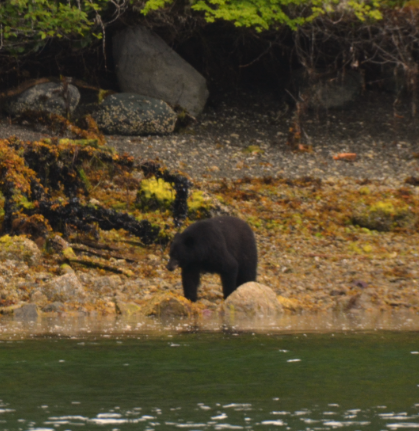
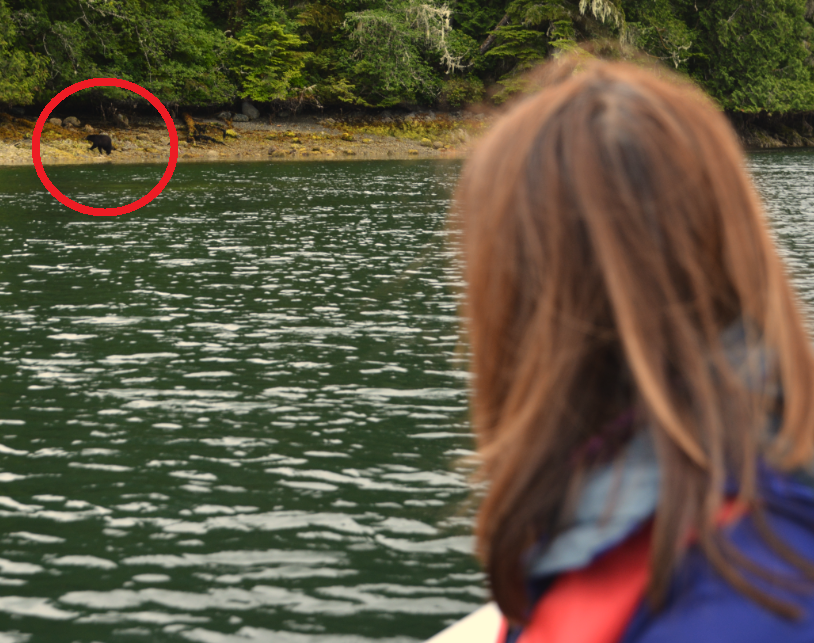
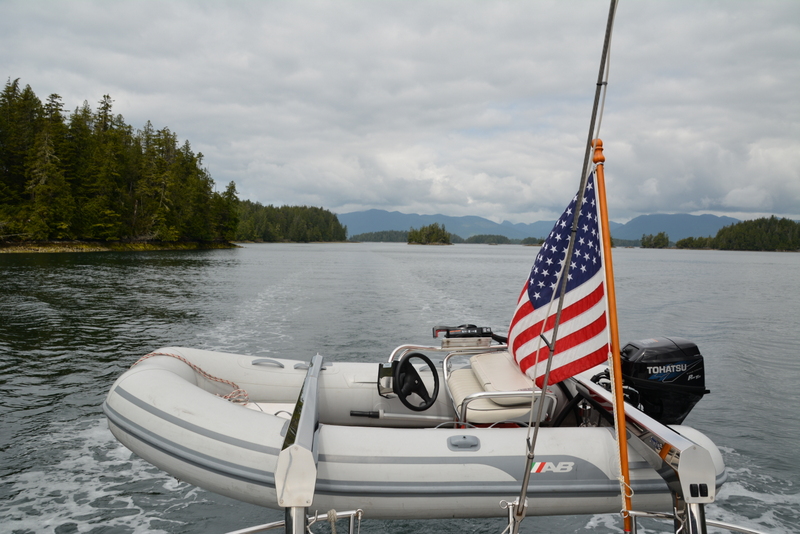
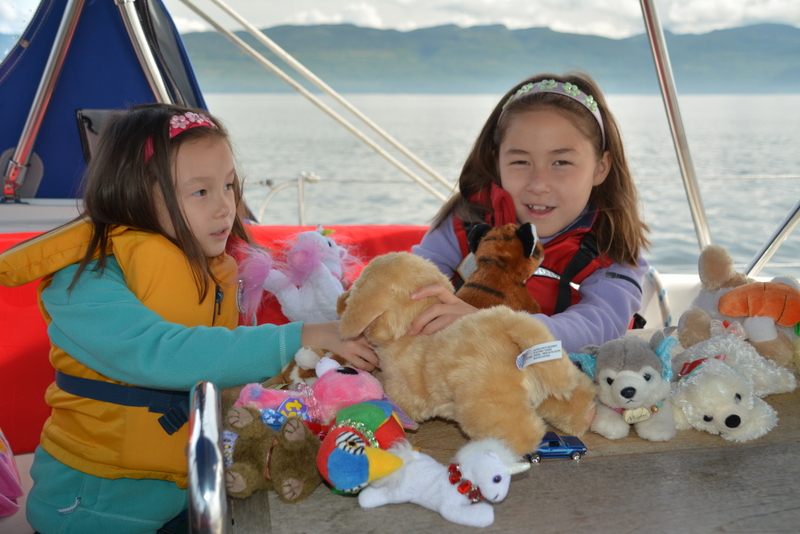
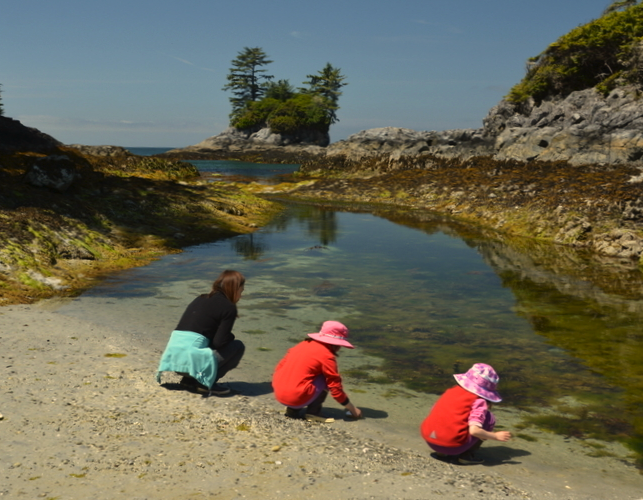
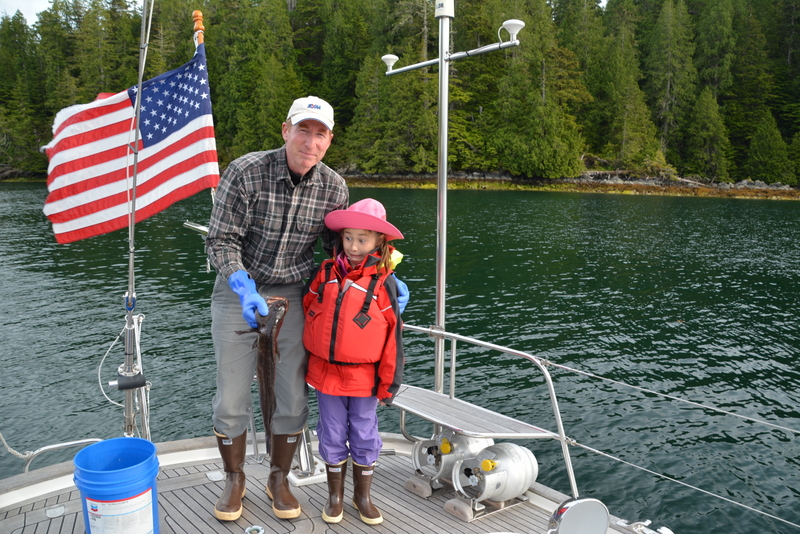
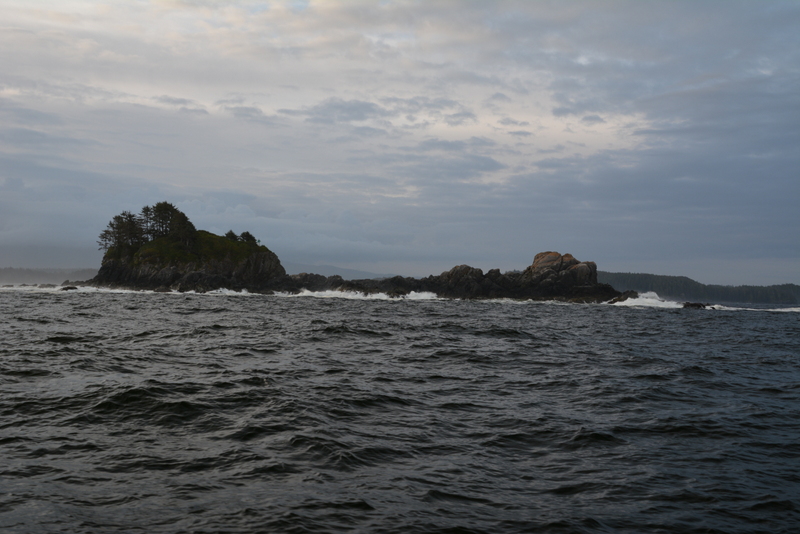
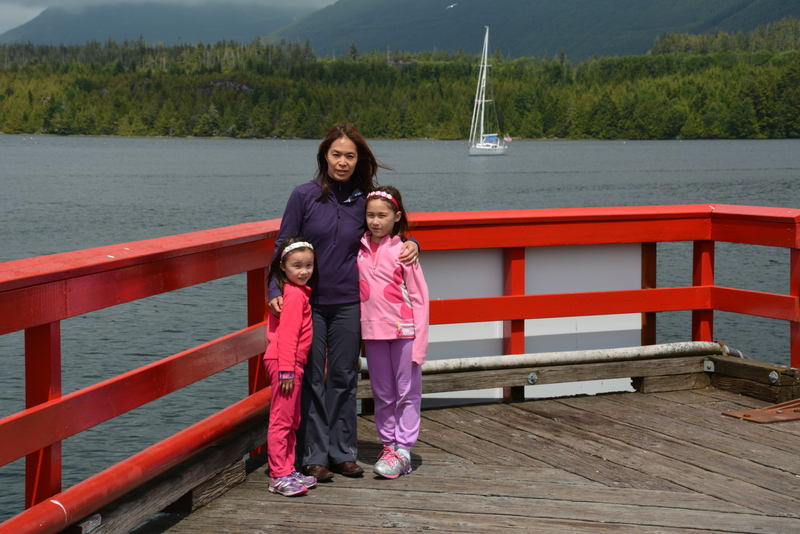
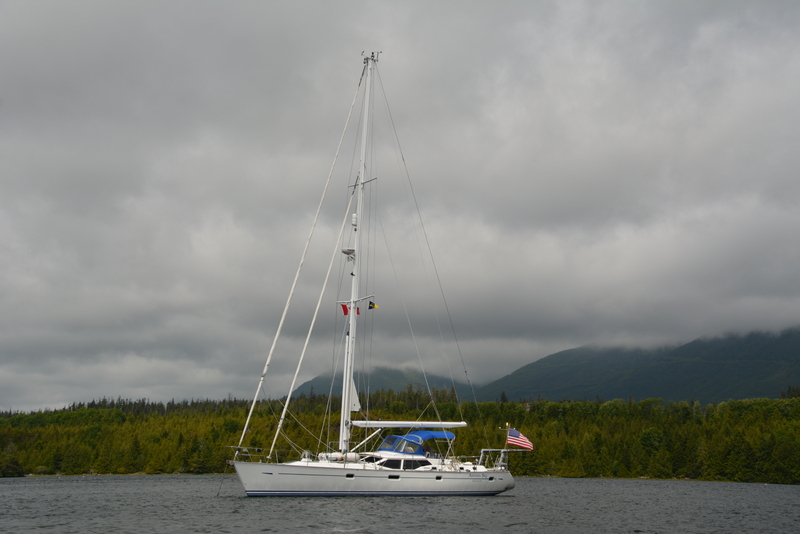

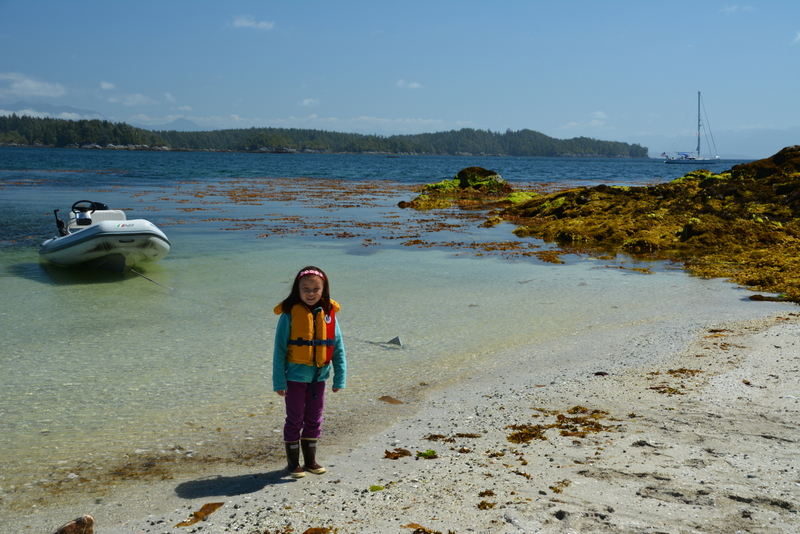
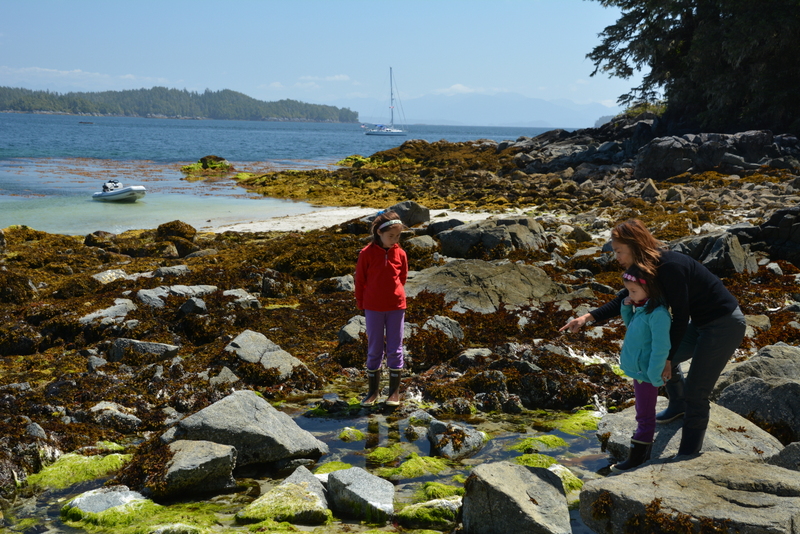
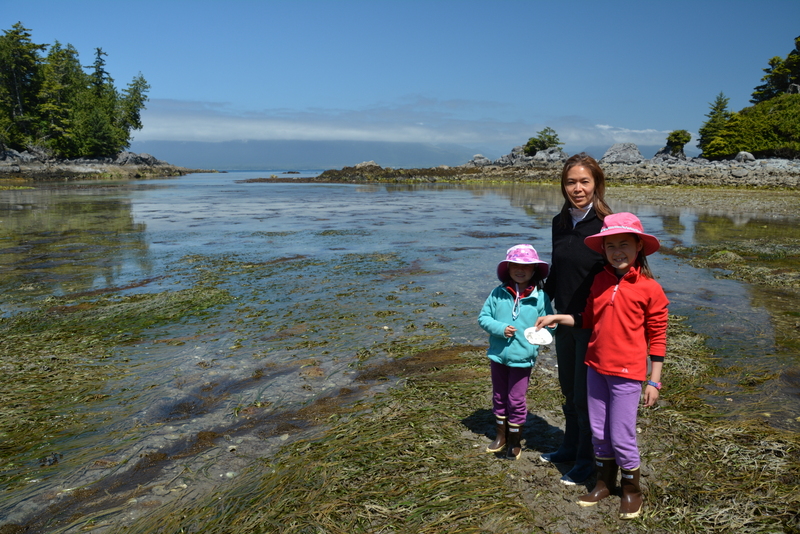
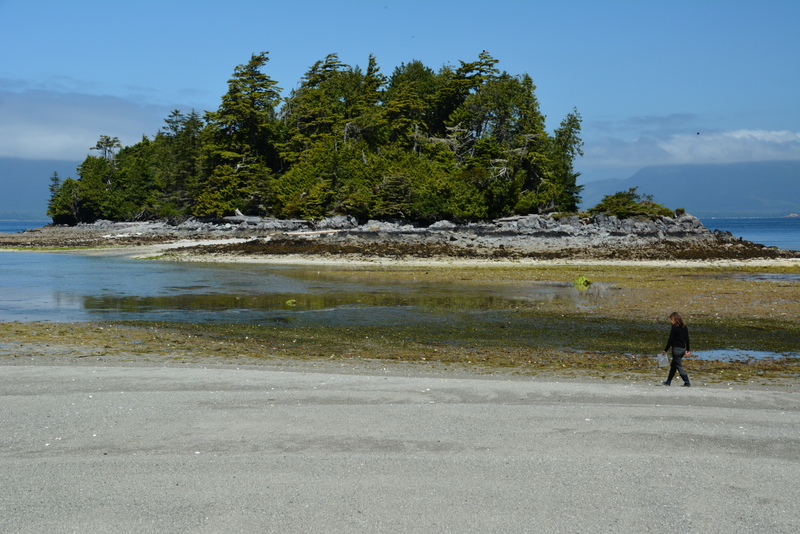
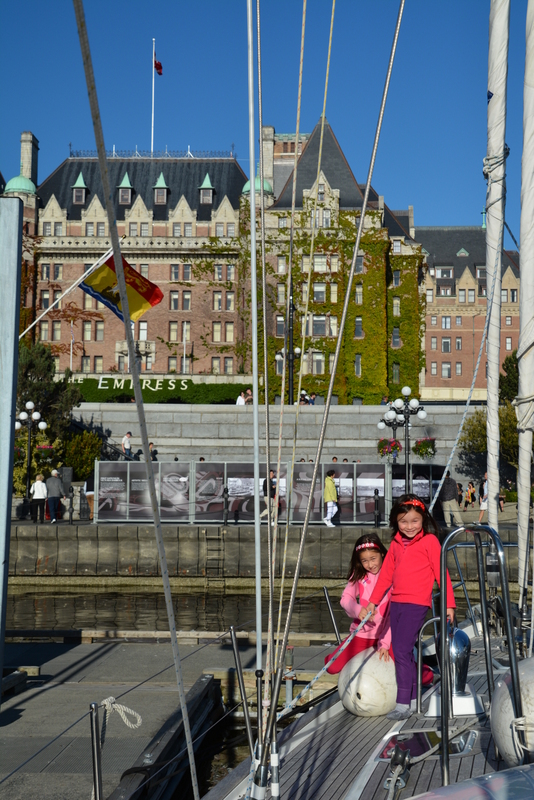
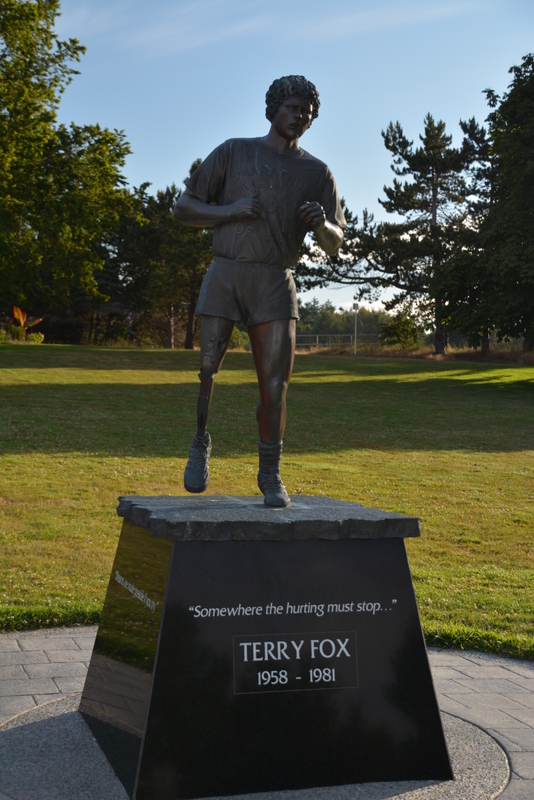

October 29, 2014
3:47 am #comment-1
Hey, when is the big trip? We’re anxious to see the next posts.
Jon and Hui (and Sophie)
November 3, 2014
12:33 pm #comment-2
Jon, Hui (and Sophie),
Things are in planning mode but, as Sherlock Holmes used to say, “Watson, the game is afoot!”
Cheers.
Derek
April 28, 2015
3:52 am #comment-3
Good Morning,
Thanks for the great tour. I’m going to Barkley Sound in June.
Why did you cross the Strait and go to Victoria rather than go to Neah Bay and then cross?
Thanks.
May 14, 2015
6:53 pm #comment-4
We like Victoria and always like to stop to here. It’s easy to check in to Canada as well.
Derek